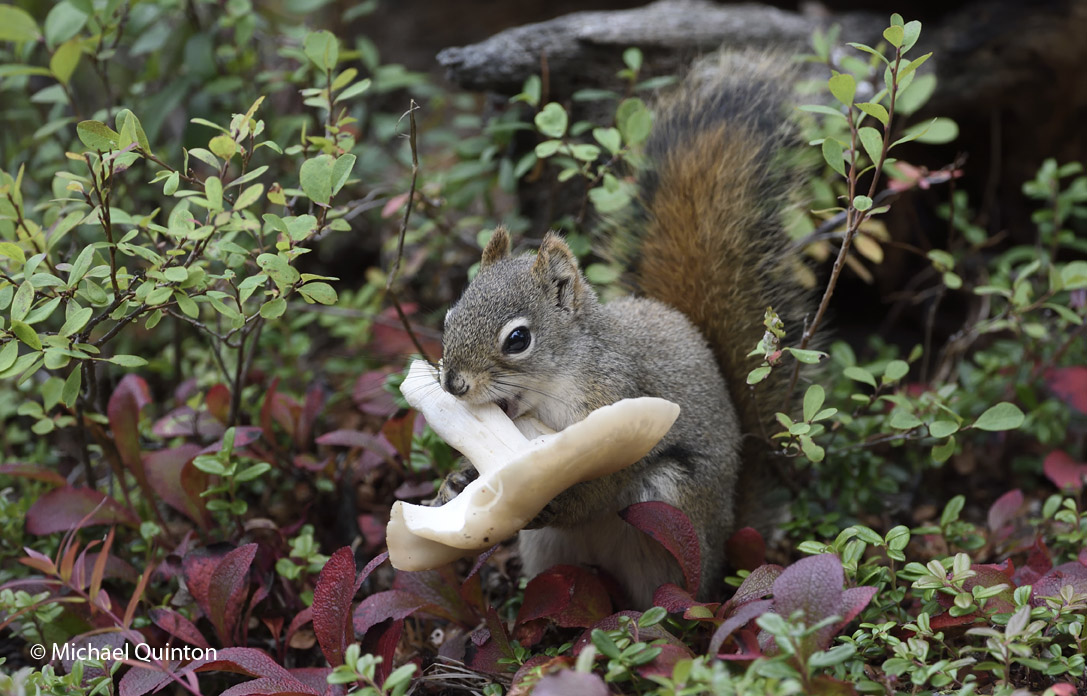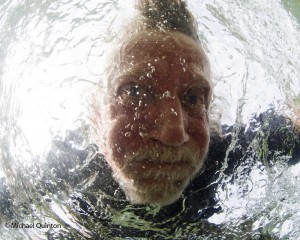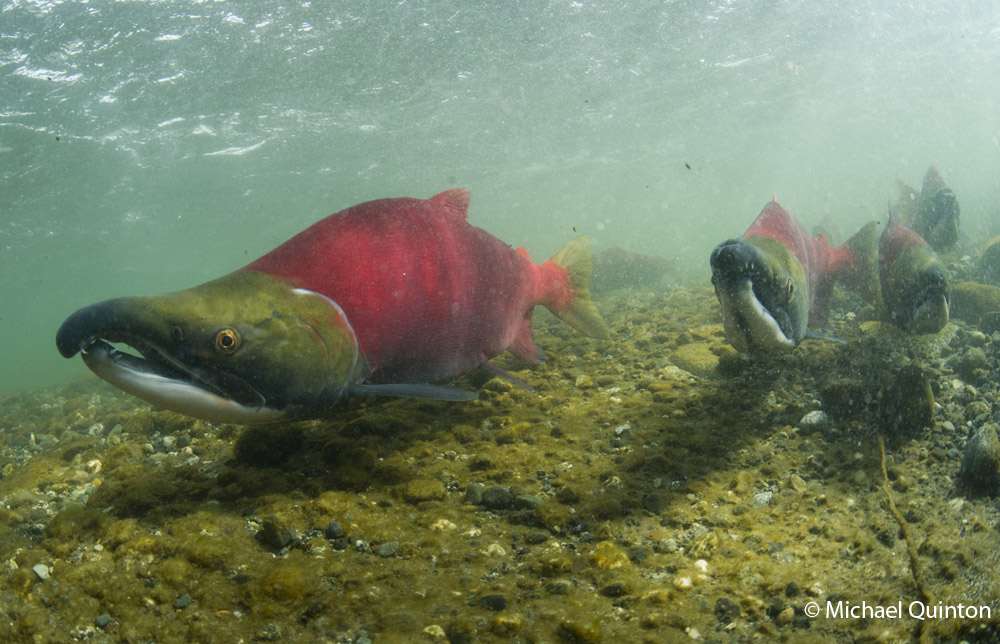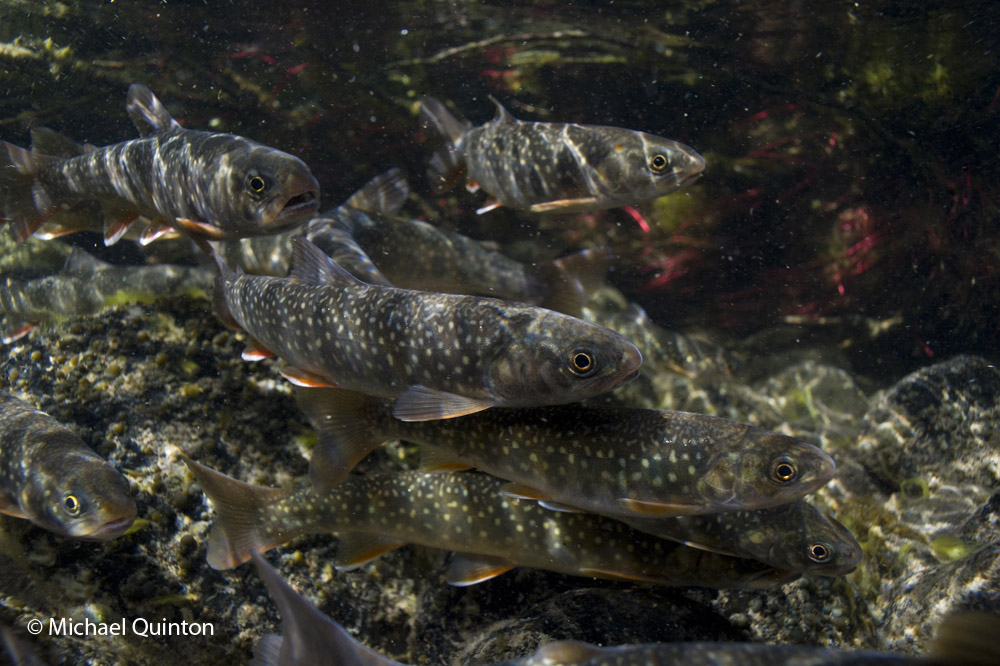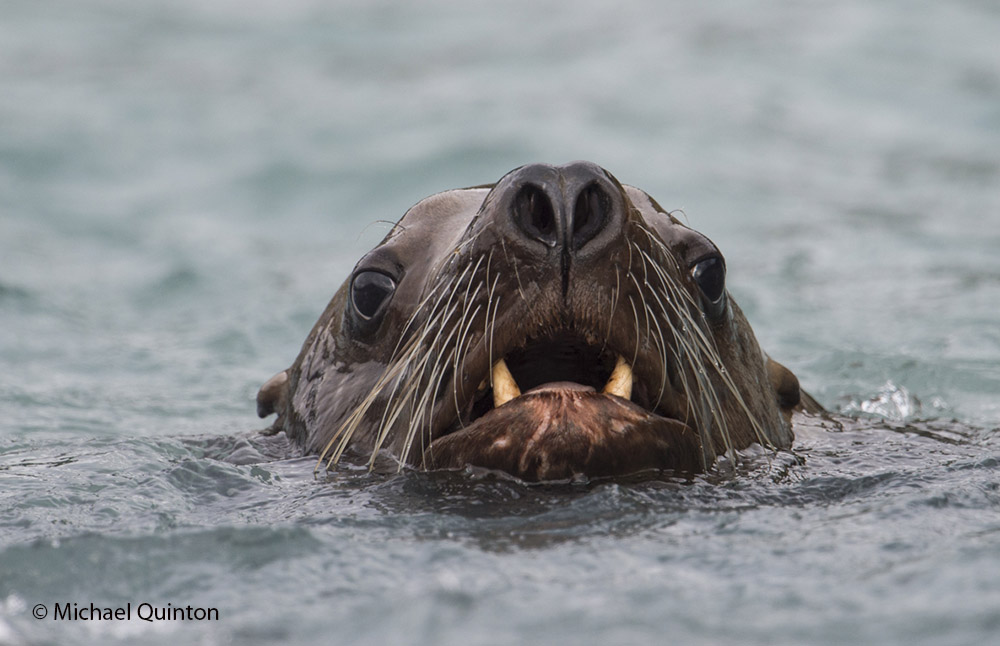All summer and fall dall rams have shunned the groups of ewes and lambs. The rams prefer the high country where they hang out in small bachelor bands. With the approach of winter their association begins to fray as they begin to sort out a pecking order. The rams stand in tight groups, displaying their massive curls trying to intimidate. They kick, growl, shove, and finally engage in dramatic displays of head butting. For the most part dominance has been been sorted out when they join the herds of ewes and lambs already on the winter range.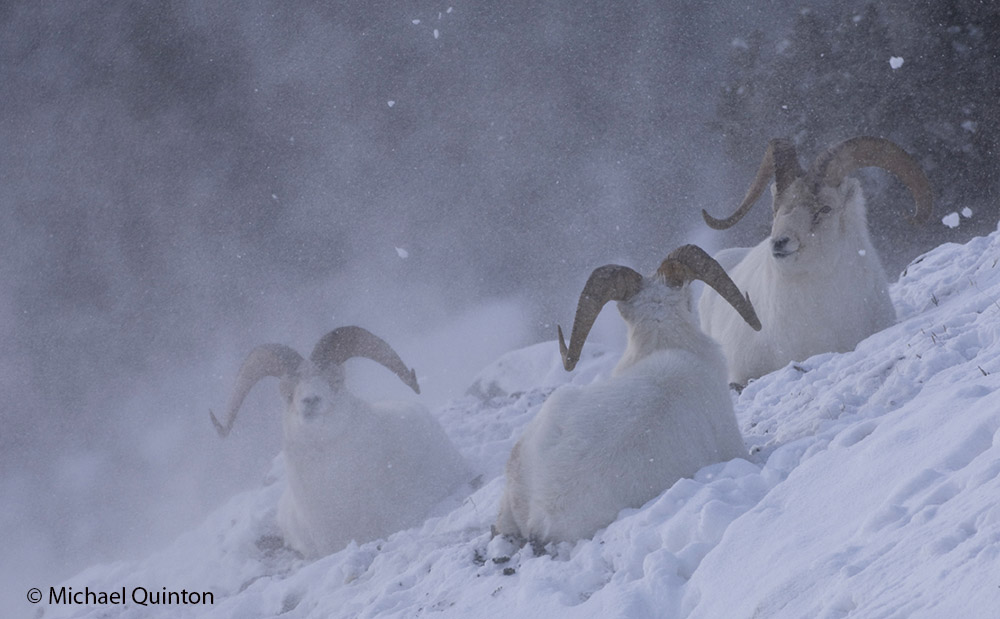 Dall rams Continue reading
Dall rams Continue reading
Tag Archives: photography
WILDERNESS IN WHITE
ONE OF MY FAVORITE PHOTOGRAPHIC SUBJECTS, DALL SHEEP
RED SQUIRRELS, HOARDING BEHAVIOR
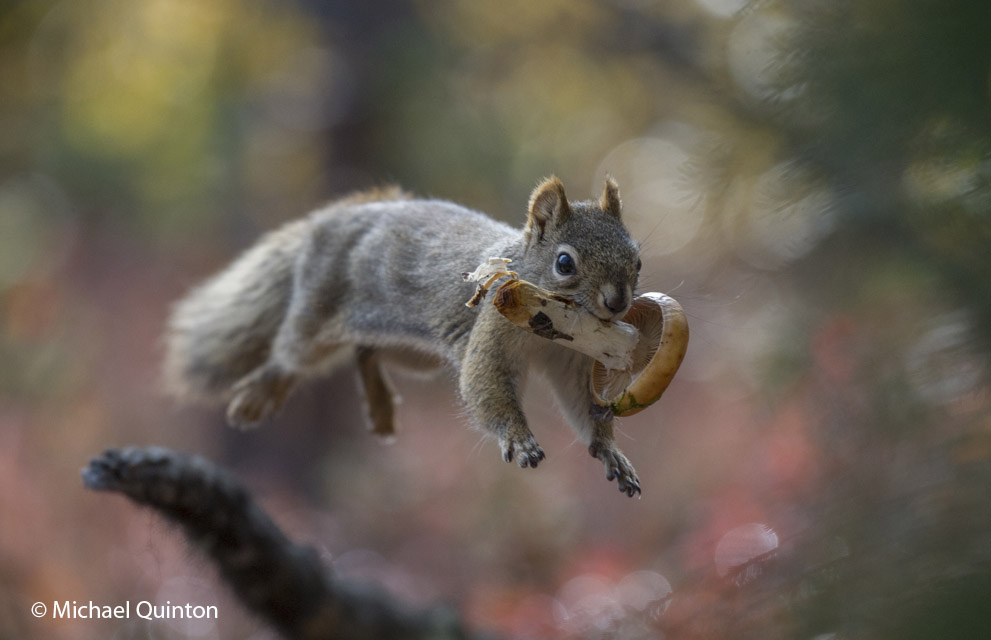 Red squirrel carries mushroom which will be added to its growing winter larder.
Red squirrel carries mushroom which will be added to its growing winter larder.
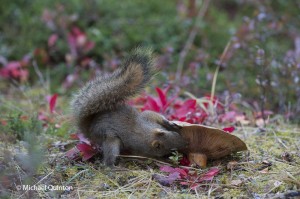 Each fall in preparation for a long, cold winter red squirrels here in Alaska begin a frenzied gathering of food. Their hoarding behavior has very important survival benefits. Gathering food in the fall, before snows arrive will save time and energy. During the short days of winter red squirrels need to conserve their energy. When snows cover the forest floor red squirrels are more exposed to predation and the less time they must spend searching for food the better. Continue reading
Each fall in preparation for a long, cold winter red squirrels here in Alaska begin a frenzied gathering of food. Their hoarding behavior has very important survival benefits. Gathering food in the fall, before snows arrive will save time and energy. During the short days of winter red squirrels need to conserve their energy. When snows cover the forest floor red squirrels are more exposed to predation and the less time they must spend searching for food the better. Continue reading
MUSHROOMS AND RED SQUIRRELS
Red squirrels work overtime in late summer/early fall gathering mushrooms. I spent several days this week photographing them. Though red squirrels can be a nuisance around our wilderness home I try to tolerate them. Our current red squirrel seems to be satisfied living a life in the wild so as long as he minds his own business he is on the payroll. I discourage bad squirrel behavior such as chewing on the house and if they persist, they get that one way ride up to my mean old neighbor ladies place. And she handles red squirrels just like most of my neighbors do. Continue reading
LAST DANCE OF THE SOCKEYE
Taking a peek into a tributary of the Copper River in Alaska’s interior reveals a rarely witnessed but prehistoric cycle of life. Traveling nearly three hundred miles up the Copper River through a soup of glacial silt, sockeye salmon have reached their gravel spawning beds.
Since leaving the ocean and entering fresh water, sockeye salmon undergo dramatic changes. Their silver skin turns to crimson red and their head becomes green. The male sockeye develops a wickedly hooked jawed, an aggressive attitude, and a one track mind to reproduce. Continue reading
DOLLY VARDEN
Dolly varden are not trout but a species of char. In northern Alaska “dollies”can grow to thirty inches and twenty pounds but the dwarf varieties in small interior streams (above) rarely exceed ten inches. Continue reading
STELLER’S SEA LIONS
Adult, male Steller’s sea lion on the prowl in Prince William Sound. Pink salmon, the most numerous of Alaska’s five species of salmon are schooling by the thousands just offshore. The pink salmon returning to their freshwater spawning streams are dogged by a gauntlet of predators including, harbor seals, bald eagles, killer whales and sea otters as well as Steller’s sea lions. Continue reading
HAWK OWLS ON THE MOVE
 Though unable to fly three-week old hawk owlets are ready to make the leap.
Though unable to fly three-week old hawk owlets are ready to make the leap.
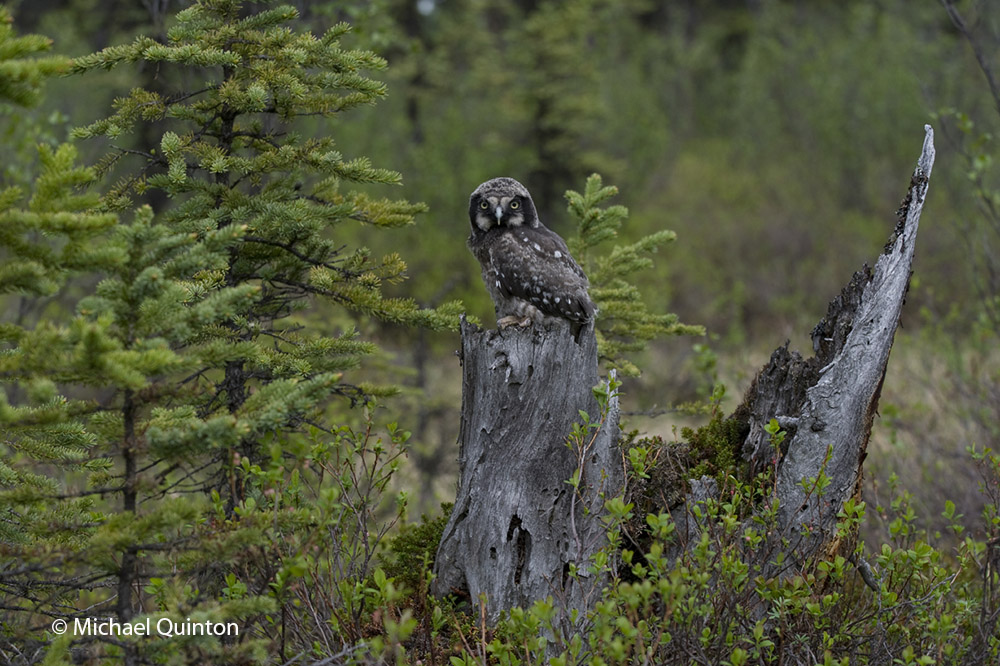 For young hawk owls the ground is a dangerous place. Continue reading
For young hawk owls the ground is a dangerous place. Continue reading
HUNTING LIKE A HAWK
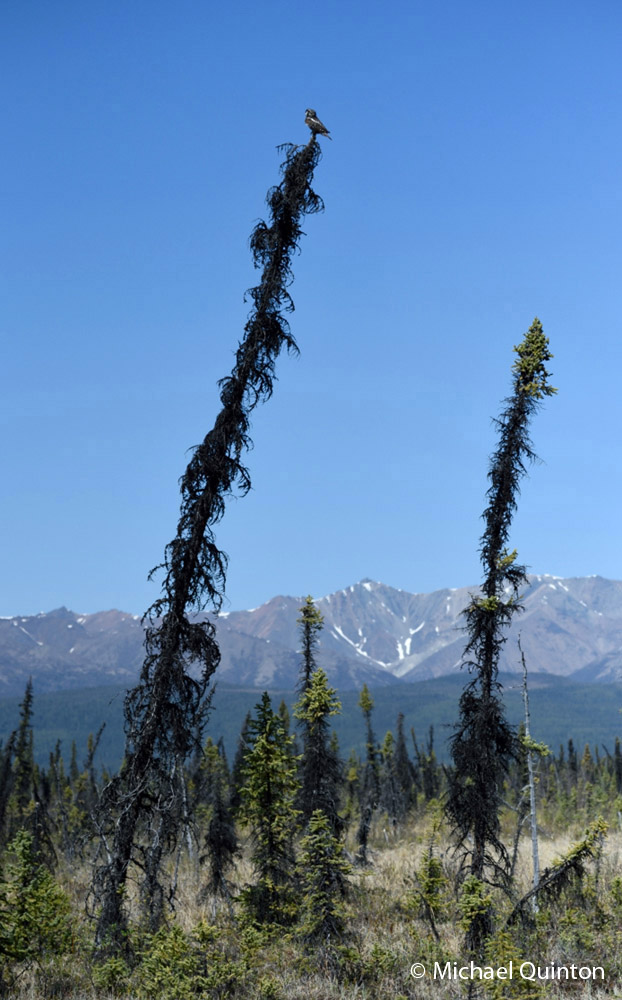 A northern hawk owl perched atop a dead, black spruce overlooking its preferred hunting grounds, an Alaskan muskeg wetland.
A northern hawk owl perched atop a dead, black spruce overlooking its preferred hunting grounds, an Alaskan muskeg wetland.
The northern hawk owl is named after its hawk-like hunting behavior. Like hawks, the hawk owl hunts by day using its keen eyesight to spot small birds and mammals. The red-backed vole is by far the most important prey species. But the hawk owl is an opportunist and other species of voles and several species of shrews are also caught. During those years when snowshoe hares are plentiful, hawk owls will add these much larger prey species to their list, as will many species of birds from the tiny, common red-poll to birds up to the size of ptarmigan. Continue reading
OWLS BY DAY, OWLS BY NIGHT
BY DAY
 Adult male northern hawk owl is active during the day.
Adult male northern hawk owl is active during the day.
For a few weeks I have been photographing a pair of northern hawk owls that have nested in a stand of tall white spruce. Hawk owl populations are cyclic and for the past three years they have been rare in my part Alaskan interior. Over the past twenty years, I have been trying to capture their little known life history. In those twenty years I have found only six or seven active nests. Continue reading


